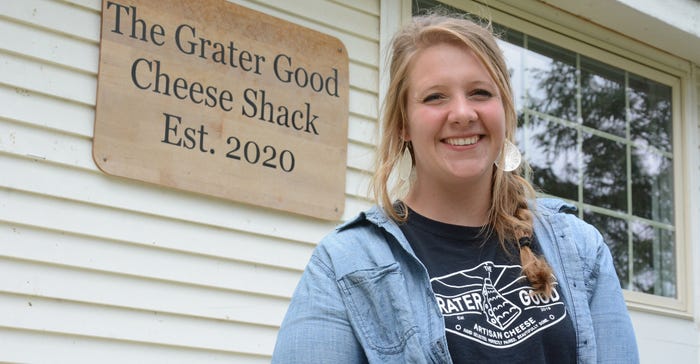
Being open to ideas for improvement and paying attention to detail would help explain how the Leonard farm near Norwood Young America, Minn., has been in the dairy business for 150 years.
Tim, Amy and daughter Christine Leonard milk 45 registered Holsteins in their tunnel-ventilation tie-stall barn, and they also farm 200 acres, raising alfalfa, corn and soybeans. Amy’s great-great grandfather homesteaded the farm in 1871 and over the years, succeeding generations continued to work the dairy.
The Leonards hosted a field day with the Carver County-University of Minnesota Extension this summer. They shared the herd management practices they follow that help their cows produce high-quality milk. Plus, Christine talked about her new business venture, The Grater Good, which features custom-made cheese and meat platters.
Here are highlights from the field day:
Maintain high milk quality. Keeping milk barn stalls clean and practicing hygienic udder preparation for milking are two keys in keeping somatic cell counts — a milk-quality indicator — low. The Leonards also believe that selective use of dry-cow mastitis treatments and teat sealant help, too. They only use antibiotics at dry-off on selected cows with intense cases of mastitis, thus reducing drug use and cost. Each cow’s quarter is cultured so they know which dry treatment to use, and then they review cow records for clinical mastitis cases.
“You have to be really, really clean for the teat sealant to work,” adds veterinarian Joe Armstrong, a U-M dairy and beef specialist. The product, which has a consistency similar to toothpaste, is infused into the end of the teat canal after a cow’s last milking prior to dry-off and blocks possible bacterial infection.
Tim noted that fresh cows are coming in with low somatic cell counts.
“Keeping cows clean while they are dried off is key,” he says. They have a dry-cow shed for housing and keep it well-bedded with straw.
Optimize nutrition and support research. The Leonards feed a total mixed ration to their cows that includes home-grown haylage, ground high-moisture corn and a custom protein mix formulated by their feed nutritionist. They also partner on research with Milk Specialties Global, an animal and human protein-based product researcher and manufacturer, headquartered in Eden Prairie, Minn. Olivia Drehmel, research and development lead, talked about the company’s on-farm research with the Leonards which focused on rumen-protected proteins. Research techs demonstrated how they pull rumen fluid from a cannulated cow using a long tube and a syringe pump. Fluid is then placed in a thermos and taken to the lab. Visitors were then invited to pull on long plastic sleeves and stick an arm into the cow’s rumen and explore its contents. Folks hesitated until a journalist in attendance volunteered first. (Disclosure: It was this article’s author.)
The Grater Good. When Christine, one of Tim and Amy’s four adult children, left for college, her career path did not include returning to the home farm. She realized, however, she did want to be a part of the dairy operation. After graduating and working for a Minnesota cheesemaker, she discussed the idea with her parents of returning and starting a value-added venture. Her experience with cheese retail offered the opportunity: Making and selling specialty platters with cheeses and meats. Her business, The Grater Good, opened in its new licensed “cheese shack” in late 2020.
“It was the best thing to come out of 2020,” Christine says. She built the small structure so she could one day make small batches of cheese. She hopes to teach classes on how to build cheese boards, too.
She uses goat, cow and sheep cheeses on her boards, and tries to buy Minnesota products — but will source cheese throughout the Midwest.
“I want to put cheese on boards that you can buy in your grocery store,” she says. “I want people to think more about where their food came from.”
About the Author(s)
You May Also Like






